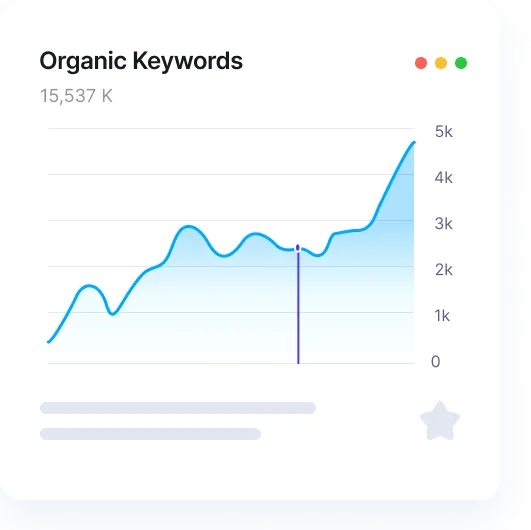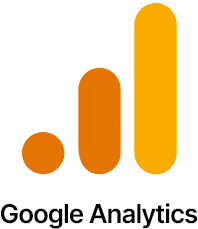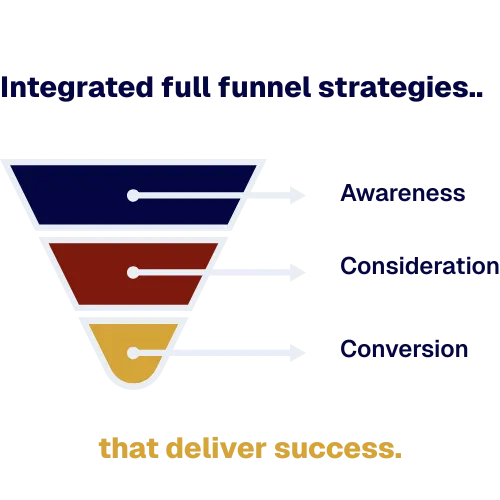

Organic traffic typically has higher conversion rates than any other traffic channel, and this is because you are tapping into users already searching for your products.
Shopify SEO agency
Any e-commerce business is highly competitive, and unfortunately, Shopify does not come pre-optimised for SEO. We specialise in optimising the technical structure, finding keywords that your customers are searching for and optimising pages to get them ranking higher in the search results.
Even in a crowded market, we can find an edge that allows you to become visible.
USING TOOLS :





















Every decision we make is driven by data and research.

SEO comprises these main areas:
Search engines are algorithms that read your website’s code, and optimising this code to ensure search engines can read them easily, efficiently and to understand what it is you do is the key to technical SEO. It involves optimising:
The way Shopify works is that all of this need to be edited in the code area of the site, not the live editor. So the problem areas may not be initially obvious to you, and a full audit is needed to identify opportunities.
We’ve worked with many Shopify sites in the past, and many of the pre-built templates that clients are using are not optimised, but need subtle tweaks in the template files that can really boost all the pages utilising them.
Another aspect is the content on the page, which aids in informing users as well as search engines what’s on the page and the relevance it has.
The most important pages on an e-commerce store are the collection pages. This is because once these pages are ranking, the traffic then filters down onto the various individual product pages.
The classic mistakes e-commerce websites make are to just include products on their collection pages. This may look nice, however, it doesn’t inform search engines what’s on the page, and they won’t rank.
By including keyword-rich content (usually at the very bottom of the page to maintain user experience) search engines will be able to understand what’s on the page and it has more information to decide what the page should rank for.
As the title suggests, this is the work that happens off the website and includes link building. This is vitally important to rank higher in the search results, especially when you’re likely competing against large conglomerate brands.
By doing an outreach campaign as well as gaining citations, we can build up the site’s authority and trustworthiness so that search engines favour us in the results.
As discussed, the most important pages on a Shopify site are the collection pages, as once these are ranking, the traffic can then filter down into the more individual pages. The collection pages are also often the higher-demand keywords.
Conducting research to find the best search terms that are competitively viable is crucial to a successful campaign. All current pages on the site get assigned a target keyword, and new pages are created to tap into new opportunities.
WordPress is usually the preferred choice, however we have experience with many other CMS’s, including custom coded.









We begin with a consultation where we find out your goals and growth ambitions. Vital for informing our strategy, ensuring it’s aligned with your goals.
An audit is prepared that examines all three areas of SEO, informing us of the extent of the work. We also conduct a thorough market and keyword analysis, allowing us to plan optimisations for every page.
We carry out reporting and conversion tracking prior to any work to record results. We then carry out our optimisations to the site. Search engines will initially take time to see these, depending on your authority.
Our real-time reporting dashboard informs us both of our progress. We then make more adjustments to tweak and maximise our ROI.








*Some projects delivered in collaboration with agencies during previous roles.
Let’s get your site ranking higher, taking up a larger share of the search results and eventually a larger share of your market.
Please reach out if you have any further questions.
The general practice is still very much the same, however, we will have a larger focus on transactional and commercial intent keywords to drive purchases.
The way Shopify’s CMS operates is also very different from say WordPress, so the way optimisations are carried out is inherently different.
Shopify apps can aid in meta tag formatting or Pagespeed optimisation. However, they can’t develop a strategic plan, select target keywords accurately or go into the code and fix it from the source. To tackle the high-impact activities, you will need an expert and not an app.
SEO is a long-term strategy, not a quick results strategy like paid advertising. This is because it takes time to formulate a strategy, deliver it, and for search engines to recognise it. The time it takes for search engines to register our optimisations depends on your link profile; if good, search engines will crawl your site far more regularly and you will see results much faster. A quick glance at this during our consultation will give us a rough idea of the time to results.
Shopify is good for SEO, but it does have its own unique challenges to overcome in relation to duplicate content, the way templates are handled, pages created and filtering, which if not handled correctly, can lead to specific architectural issues. But overall, it is good for SEO as all the issues can be fixed.
We require necessary access to your Shopify admin (as a collaborator), Google Search Console, and Google Analytics. This allows our team to perform a detailed technical audit, implement essential code changes, and accurately measure the impact of our SEO work on your organic revenue.
We have multiple packages from which to choose from to suit the size and complexity of your catalogue, industry competition and growth ambitions. With Shopify SEO services as an investment, you can reduce your reliance on expensive paid advertising (though we do that as well) and start tapping into a more cost-effective marketing approach.
This ROI calculator helps you estimate how much revenue your marketing budget could generate based on your website performance and sales process.
Here’s what each part means:
Monthly marketing budget – How much you plan to spend on marketing (e.g. SEO, PPC, Paid Social).
Website traffic – How many visitors your website gets each month.
Website conversion rate – The percentage of visitors who generate leads or key events (fill out a form, call you, etc). Most websites convert between 2–5%.
Lead-to-sale conversion rate – The percentage of leads or key events that turn into paying customers. This varies by industry, but 10–30% is a common range.
AOV (Average Order Value) – The average amount each customer spends when they buy from you (we use this figure to estimate a profit based on your average customer).
Once you enter your numbers, the calculator shows:
Estimated leads – How many leads your website could generate.
Estimated sales – How many of those leads could convert into customers.
Estimated revenue – How much revenue that could generate.
ROI – Your return on investment, based on your budget and estimated revenue.
Prefer to message? Chat live now in the bottom corner.
Data-driven marketing to elevate the standards of internet marketing.